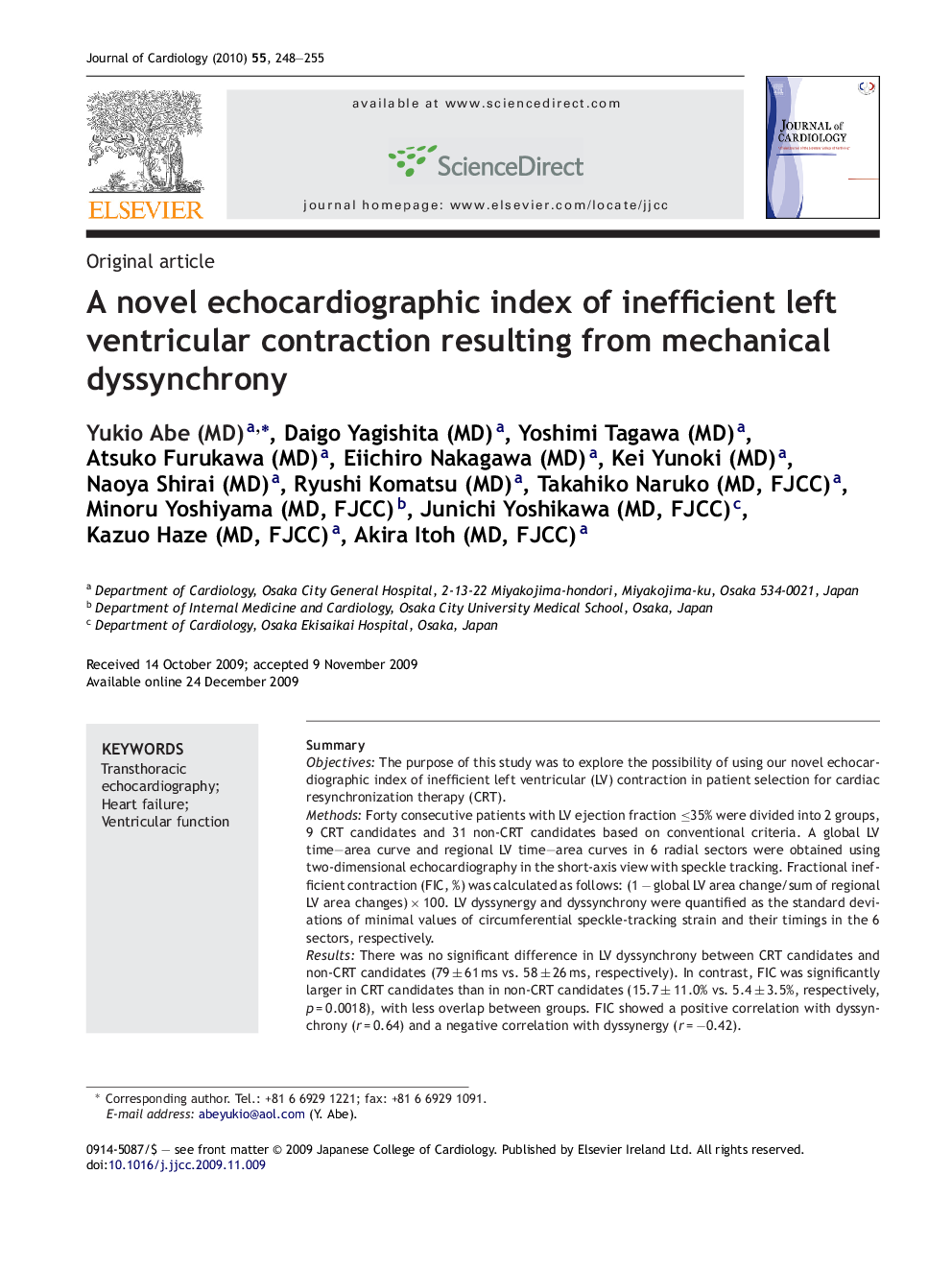| Article ID | Journal | Published Year | Pages | File Type |
|---|---|---|---|---|
| 2963668 | Journal of Cardiology | 2010 | 8 Pages |
SummaryObjectivesThe purpose of this study was to explore the possibility of using our novel echocardiographic index of inefficient left ventricular (LV) contraction in patient selection for cardiac resynchronization therapy (CRT).MethodsForty consecutive patients with LV ejection fraction ≤35% were divided into 2 groups, 9 CRT candidates and 31 non-CRT candidates based on conventional criteria. A global LV time–area curve and regional LV time–area curves in 6 radial sectors were obtained using two-dimensional echocardiography in the short-axis view with speckle tracking. Fractional inefficient contraction (FIC, %) was calculated as follows: (1 − global LV area change/sum of regional LV area changes) × 100. LV dyssynergy and dyssynchrony were quantified as the standard deviations of minimal values of circumferential speckle-tracking strain and their timings in the 6 sectors, respectively.ResultsThere was no significant difference in LV dyssynchrony between CRT candidates and non-CRT candidates (79 ± 61 ms vs. 58 ± 26 ms, respectively). In contrast, FIC was significantly larger in CRT candidates than in non-CRT candidates (15.7 ± 11.0% vs. 5.4 ± 3.5%, respectively, p = 0.0018), with less overlap between groups. FIC showed a positive correlation with dyssynchrony (r = 0.64) and a negative correlation with dyssynergy (r = −0.42).ConclusionsOur novel echocardiographic index of inefficient LV contraction, which increases with more dyssynchrony or less dyssynergy, may prove more useful in patient selection for CRT than other indices that focus on LV temporal dyssynchrony alone.
